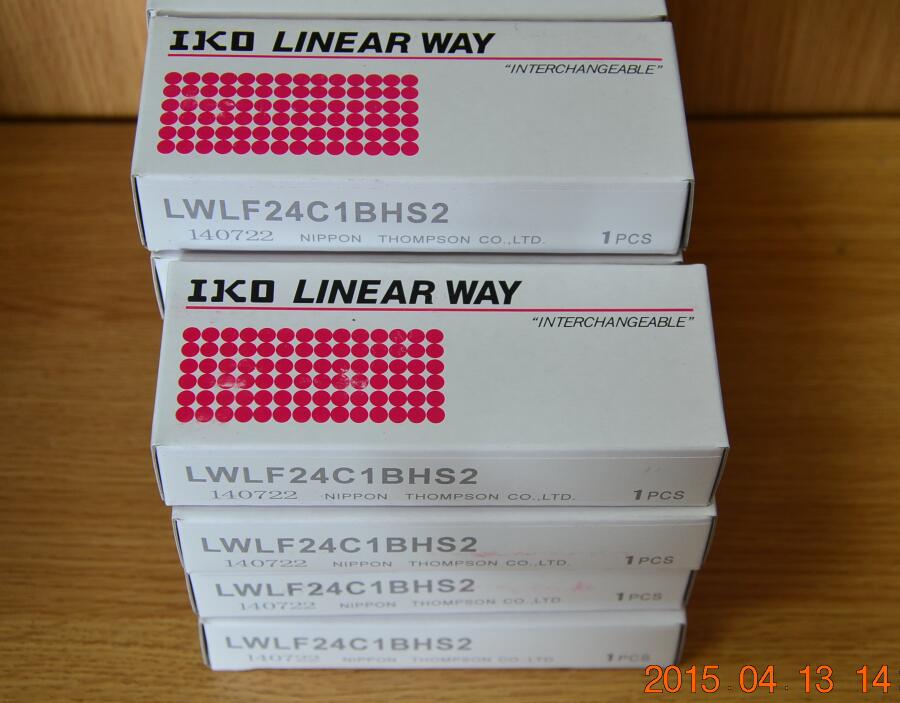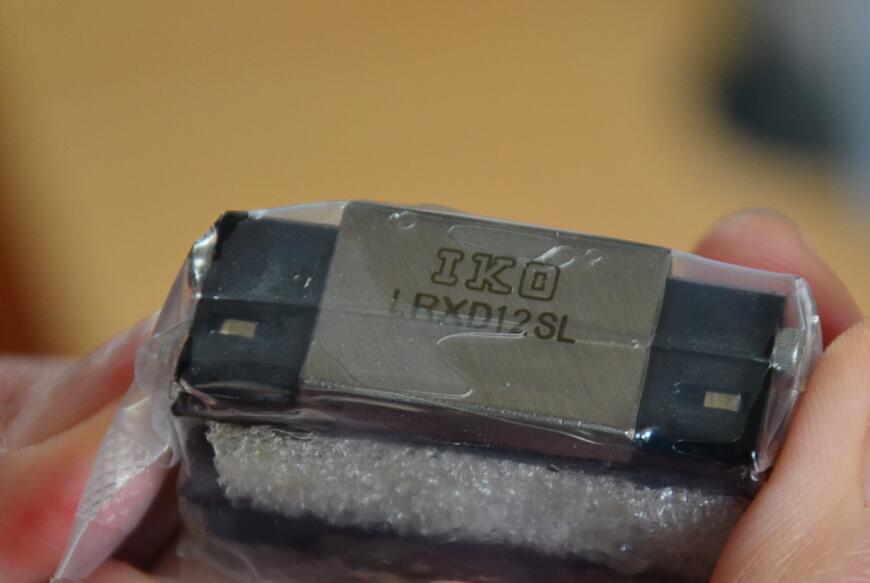IKO bearing identification method
1.Identification of radial ball bearings in IKO bearings
For radial ball bearings with normal technical conditions, the inner and outer raceways should be free of flaking and severe wear marks, and present a bright arc groove; all balls should be kept round and free of spots, cracks and flaking on the surface; The cage is not loose, broken or worn. When using one hand to hold the inner ring and the other hand to gently push the outer ring to rotate, the rotation is required to be stable. Only a slight sound of the ball rolling on the raceway is heard, and there is no vibration; it should be gradually decelerated when stopped, and there is no backward phenomenon after stopping For normal radial ball bearings, the gap between the inner and outer rings and the rolling elements is 0.005-0.010mm. When shaking the inner and outer rings in the radial direction, there should be no gap. Used IKO bearings can hold the inner ring by hand and shake it in the axial direction a few times. When the outer ring and the ball have obvious noise, it means that the fit gap exceeds 0.03mm and should not be used anymore.
2.Identification of spherical roller bearings and short cylindrical roller bearings in IKO bearings
The outer ring of this type of IKO bearing is separable. Under normal conditions, the inner and outer ring raceways and rollers should be free from breakage, pitting, and deep wear marks; the cage should be free of deformation and can gather the rollers on the inner ring; the inner and outer ring raceways and rollers The fitting gap of the sub should not exceed 0.06mm.
3.IKO ball thrust ball bearing identification
Under normal conditions, the two raceways should be free from peeling injuries and severe wear, and the balls should be free from breakage and pitting; the cage should be free from deformation, not touching the two raceway washers, and gather the balls firmly together.
4.Identification of tapered roller bearings in IKO bearings
Installation and use of IKO bearings
Bearing assembly method: Because the bearing is a high-precision product, improper assembly can easily damage the pump shaft connecting bearing channel, resulting in damage to the IKO bearing. When assembling the bearing, there should be a special mold, which can not be knocked at will. When pressing into the shaft, only a small ring can be used to force, when pressing a large ring, only a large ring can be used. Air pressure or hydraulic pressure is required during assembly, and the top and bottom touch should be outside the horizontal state during press-fitting. If it is inclined, the bearing channel will be damaged due to force, and the bearing will be induced.
The life of IKO bearings is closely related to manufacturing, assembly, and use. It must be done at every link to make the pump shaft connecting bearings in the best running state, thereby extending the service life of the bearings.
How to know whether IKO bearings can be used again?
Regular inspection of the equipment, operation inspection and bearings removed during the replacement of peripheral parts are inspected to determine whether they can be used again or whether they are in good condition.
First of all, it is necessary to carefully investigate and record the removed bearings and appearance. In order to clarify and investigate the remaining amount of lubricant, after sampling, the bearings should be cleaned well.
Second,check the raceway surface,the condition of the rolling surface and the mating surface, and the wear state of the cage, etc. for damage and abnormal conditions.
To determine whether the bearing can be used again, it should be decided after considering the degree of bearing damage, machine performance, importance, operating conditions, inspection cycle, etc.
Check the results,if the bearing is found to be damaged or abnormal, the contents of the injury section identify the cause and formulate countermeasures. In addition, the inspection results, if there are the following defects, the bearing can no longer be used, and a new bearing needs to be replaced.
a.Any one of the inner and outer rings, rolling elements, and cage has cracks and debris.
b.Any one of inner and outer ring and rolling element is peeled off.
c.The raceway surface, ribs and rolling elements are significantly stuck.
d.The cage is seriously worn or the rivets are loose.
e.The raceway surface and rolling elements are rusty and scratched.
f.The rolling surface and rolling body have significant indentation and scratches.
g.There is creep on the inner diameter surface of the inner ring or the outer diameter of the outer ring.
h.Discoloration due to overheating.
i.The seal ring and dust cover of the grease sealed bearing are damaged seriously.
In-service inspection and troubleshooting
The inspection items in operation include the rolling sound of the bearing, vibration, temperature, lubrication status, etc. The specific conditions are as follows:
1.Rolling sound of bearing
A sound meter is used to check the size and sound quality of the rolling sound of the bearing in operation. Even if the bearing is slightly peeled and damaged, it will emit abnormal sound and irregular sound, which can be distinguished by the sound meter.
2.Vibration of the bearing
Bearing vibration is very sensitive to bearing damage, such as flaking, indentation, rust, cracks, wear, etc. will be reflected in the bearing vibration measurement, so the vibration can be measured by using a special bearing vibration measuring device (frequency analyzer, etc.) The size of the data cannot be inferred from the specific circumstances of the anomaly through frequency points. The measured value differs depending on the use condition of the bearing or the installation position of the sensor, etc. Therefore, it is necessary to analyze and compare the measured value of each machine in advance to determine the judgment standard.
3.Bearing temperature
The temperature of the bearing can generally be inferred from the temperature outside the bearing. If the oil hole can be used to directly measure the temperature of the outer ring of the bearing, it is more suitable. Normally, the temperature of the bearing rises slowly as the operation begins, and reaches a steady state after 1-2 hours. The normal temperature of the bearing varies with the heat capacity, heat dissipation, speed and load of the machine. If the lubrication and installation parts are appropriate, the bearing temperature will rise sharply and abnormally high temperatures will appear. At this time, the operation must be stopped and necessary precautions must be taken. The thermal sensor can be used to monitor the working temperature of the bearing at any time, and to automatically alarm or stop the shaft burning accident when the temperature exceeds the specified value.

